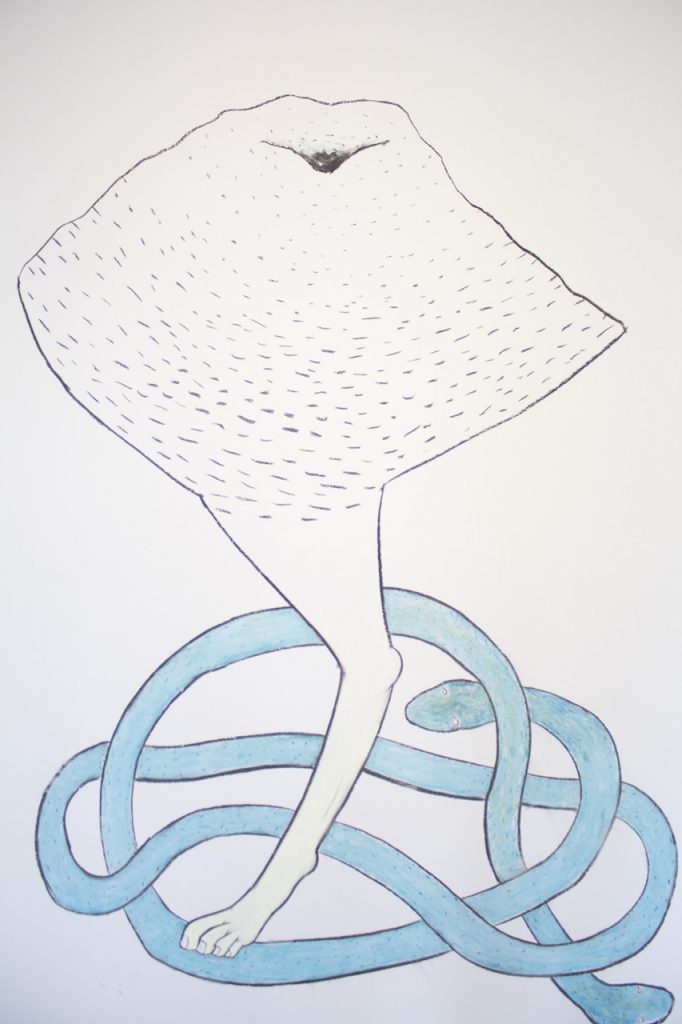Belonging With an Interconnected Ego
September 23, 2017

Accompanying text
by Nico Glaude
No artist can ever be without ego. It’s one of the motivating factors that make everyday people want to become artists. Aside from the creative process and expression, there are many elements that go hand in hand with both ego and art. Validation, recognition, selling a piece of art, getting a standing ovation, winning a grant or receiving an award, all feed into and fuel the creative ego and the desire to strive for more. At times, an artist might not have much more than their ego to sustain that primordial drive; tackling bigger projects can mean greater success, more press and more opportunities when artists let their ego guide them.
Speaking with the Z’otz* Collective, it’s surprising how little consideration is given to each member’s individual ego. In fact, complete disregard of ego is an ever-present factor in their art-making process. Their murals are rarely sketched out beforehand; each individual of this 3-piece collective comes to the wall with their own separate ideas; there’s little to no verbal communication between them as they work, although they do leave little hints behind for the other members as to what direction they think the piece should take and what it should look like. Interestingly enough, these hints are often misconstrued and can become something entirely different than what was initially intended, and so the piece becomes something new, something unexpected. It can seem like an obvious notion, especially when working within a collective, but that dynamic can play itself out multiple times throughout the creation of one mural. In a way, it’s that give and take between each individual member’s ego that allows the Z’otz* Collective to create these ephemeral murals that seem to have been created by the same hand.
Their murals are silent narratives, incorporating familiar objects, elements of nature and animals that all blend into one linear piece. While many of these individual elements might seem familiar, that familiarity gives way to the ambiguity of the final, interconnected piece. Merging these elements creates a sense of uneasiness, but the ambiguity of it all invites us to look past the unknown and embrace a certain sense of ambivalence, which finally leads to a place of understanding. We realize that the Z’otz* Collective’s murals aren’t about the singular, standalone elements, but rather are about the process of becoming aware of the whole—that there are no separate elements and that everything is interconnected.
Part of this portrayal of interconnectedness is achieved through the depiction of animals and our personal relationships with them. There are a lot of conflicting emotions and actions at play between humans and animals. The Z’otz* murals remind us that life demands respect. After all, we’re all interconnected and we need to be partners with life—to embrace it, to nourish it and to understand our impact.
The Z’otz* Collective’s murals engage and connect with viewers by bringing them back to themselves. Even if the imaginative settings are unfamiliar, the ambiguity really doesn’t come across as alienating. Rather, the odd juxtapositions arouse curiosity in the overall narrative and can ultimately lead to an understanding of the work that’s rooted in a deep sense of belonging.
The author
Nico Glaude is a Sudbury based installation artist, curator and raconteur. Everyone has an emotional investment in Sudbury and he values that by creating and curating work that is as fried, sweaty, cheap, fun and awful as any other experience you can have here. Mind of nickel, heart of gold.
